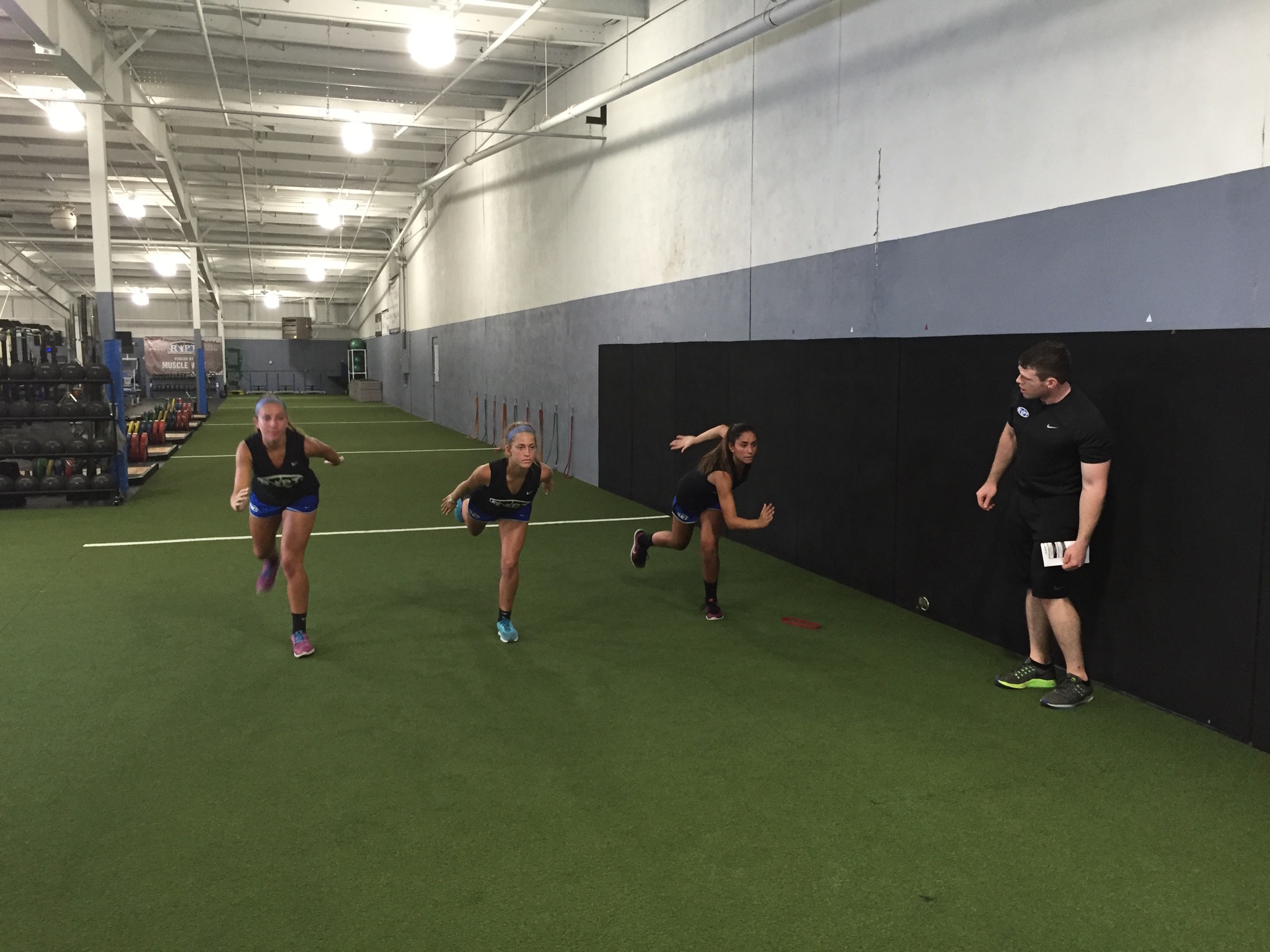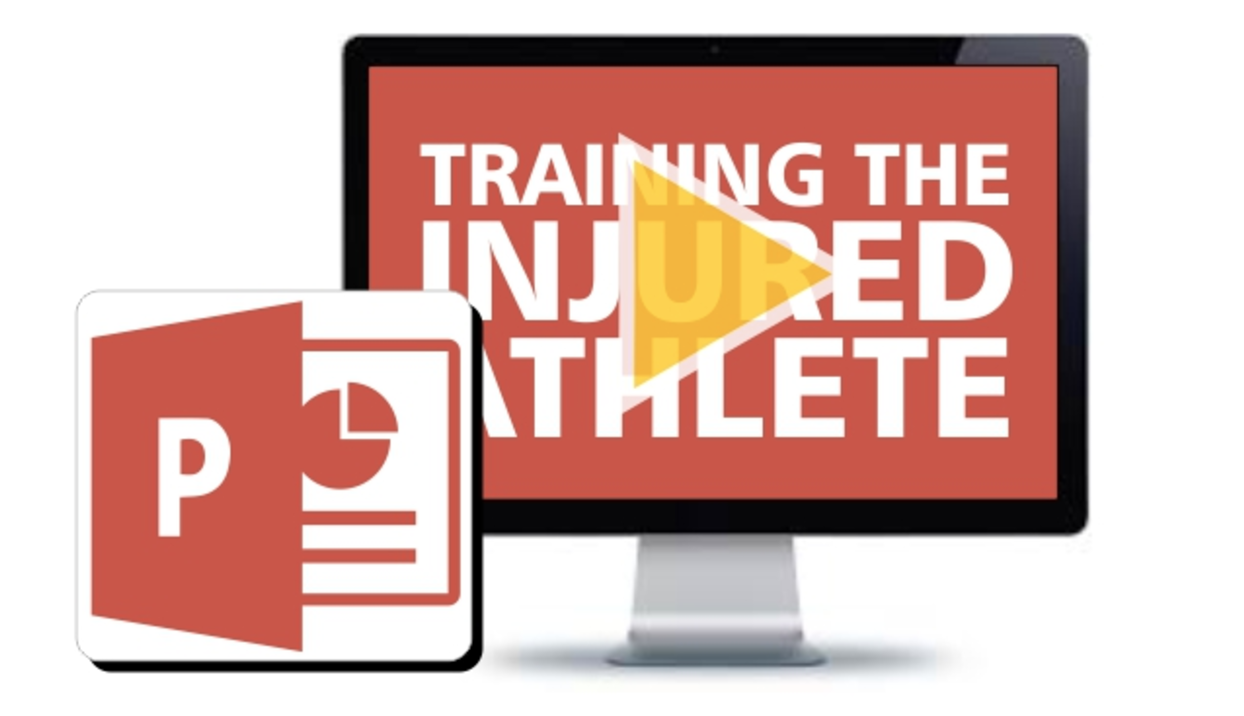Prehab is Performance Enhancement Training
By: Brian Schiff

In today’s competitive environment of organized athletics, parents are continually seeking ways to improve their children’s performance. Additionally, I have more and more parents asking me about injury prevention training. Currently, the buzz words in the arena of sport specific training seem to be “performance enhancement” and “prehab.” Prehab simply refers to injury prevention training. To captivate the athletes, I always talk about improving speed, strength, power, etc. However, to sell the parents on specialized training programs, I always speak about injury prevention as well as performance.
All strength and conditioning coaches believe that proper training is necessary to achieve athletic success. Research is now telling us proper training will also lessen sports related injuries. This has been proven with ACL tear rates in studies done by Tim Hewett and Bert Mandelbaum. I would suggest that proper prehab training will actually do both. However, it is important to understand the “why” behind each drill or exercise you do.
In order to design the most effective prehab and performance enhancement programs, you must look at the following things with all of your athletes:
- Past Medical History – To deliver the most effective training program you must know what injuries or conditions your athlete has gone through. These injuries or limitations may have a dramatic effect on the drills and exercises you choose to prepare your athlete for competition. This history may also restrict or limit your choices or necessitate the inclusion if certain training techniques to prevent further injury. Should your athlete squat heavy with a history of a herniated lumbar disc(s)? Would you have your best pitcher with shoulder instability do overhead snatches? These are just a few examples of issues that may affect your decision thinking.
- Prior Training History – It is never wise to begin a training program without establishing a proper base. You are responsible for knowing what they have or have not done before in order to educate them and ensure proper development moving forward to avoid injury. This base is critical, much like the foundation of a house. If you build a house on sand, it will eventually wash away and fall apart. Ignoring the development of basic training will lead to similar physical disaster for the human body. I have personally worked with several athletes who have actually been hurt or had their performance hindered by excessive or improper training methods employed by their own respected coaches and trainers.
- Postural Alignment & Biomechanics – Understanding how posture and biomechanics affect an athlete’s movement capacity and patterns of movement is important in reducing injuries and preventing overtraining. What do I mean? I generally look at consistent things like standing posture, hip/knee alignment, the arches of the feet, single leg stance posture and flexibility. In addition, I really like to observe the overhead squat maneuver to see how athletes move as a kinetic chain. Can they squat without compensation? Do the knees cave inward? Do they favor one leg? What happens at the ankle? Noting these things can predict a lot about how they will move during strength training, plyometrics and agility exercises.
- Basic Strength Assessment – Many coaches and trainers like to look at standard testing exercises such as 1 RM bench, 1 RM squat, dead lift and so on. I am not opposed to these tests per se, but I really think the most important testing simply involves assessing the athlete’s ability to control his/her own body weight. I have worked with elite professional athletes who can not balance on one leg or control their body weight effectively. Now, I know what you are thinking – obviously it does not affect their performance. This thought process could not be more wrong. These same athletes are also injured almost every year. A few key tests I look at are: single leg squats, single leg reaches, pull-ups, push-ups, and planks. Keep in mind that the quality, not quantity, of the movement is the most important factor to observe.
- Dynamic Movement Analysis
- Balance – Observe reaching with the arms and legs in multiple planes to see how the athlete handles changes in the center of gravity. Additionally, I like to observe single leg stance with the eyes closed (actually a static test) in order to see how much visual correction is necessary to overcome vestibular (inner ear) and joint kinesthetic deficiencies.
- Jump landing – Ask the athlete to drop down from an 18” box and land with both feet hitting the ground at the same time. Watch the knees and see if they cave inward and how stiff or upright the landing is.
- Running form – Note how the athlete runs in a linear (FW) direction as well as how they backpedal. Pay attention to arm swing, body lean, stride, and fluidity of motion.
- Change of direction (COD) – I advise checking starting and stopping capability in a linear direction as well as lateral COD and diagonal cutting patterns. Pay close attention to the knee position, body control and height of the athlete at the cuts to get a better picture of their movement skills.
- Power – I generally evaluate plyometric pushups, vertical jump, bilateral broad jump and single leg broad jumps.
All of these components play an integral role in the training blueprint for successful athletic performance programming. Ignoring any of them will lead to less than optimal results. Herein lies the difficulty facing athletes and coaches today. In a team setting, it is virtually impossible for coaches to individualize the training stimuli according to a certain athlete’s specific needs. Additionally, most of them lack the knowledge and experience to apply true periodization principles or make the assessments I have detailed earlier.
Now I am the first to recognize that as a physical therapist and strength coach, I have strong opinions about how athletes should train in regard to preventing injury. I often battle coaches on the intensity, volume and progression of their training methods because they often lack enough recovery and demand too much of athletes at the wrong times in the season. This imbalance leads to decreased performance and injuries.
Below I will briefly summarize a scenario where I recently was asked to consult with a high level high school cross country/track distance runner who was struggling with hip/knee pain and suffering from declining times last spring. The team approach failed her.
This junior female runner struggled with pain and a very awkward running gait for the better part of a year and had been seen by another performance specialist who said she did not need any correction. Keep in mind this runner consistently began to limp during the final lap of the 1600 and last ½ mile of the 5K. Her times got worse as the cross country and track season went along. The first thing I did when I saw her was to assess the things I previously spoke about. I immediately discovered the following things:
- Gluteus medius weakness on the uninvolved hip (stability side hip) leading to a drop hip on the involved side
- Decreased strength and stability with single leg squat and lateral lower leg reaching
- Decreased single leg squat on the involved (painful) leg
- Significantly greater valgus on the involved leg with overhead squat
- Significantly greater tightness on the soleus on the involved leg
I began working with her this past June. The first thing I did was structure a body weight specific training plan to correct her strength imbalances consisting of single leg squats, single leg reaching, lunges, hamstring curls, stiff-legged dead lifts and gluteus medius band work. I also gave her light plyometric exercises to compliment the strength portion of the training on non-strength days. She was instructed in stretching as well. This is not overly complicated, but I used the assessment tools to guide my program design.
Next, I analyzed her coach’s proposed running plan. He wanted her to be running between 32 and 36 miles per week as the summer went on. He also advocated increasing mileage further in the first part of the season.
Due to her biomechanical issues, I knew the higher the training mileage each week, the higher the probability of inflaming her hip and knee. Consequently, I drastically reduced her running in the early stages and had her focus on strength and cross training on the EFX, bike and pool in the early summer. The immediate goal was to reduce stress and build strength.
As the summer went on I changed the emphasis to more running, higher intensity plyos, and maintenance leg strength work as practice began. I advised her to continue with mileage between 25 and 28 miles per week – significantly less than the coach’s ideal mileage for his high level runners. She also implemented cross training in lieu of the extra mileage. The other tweak I
suggested was to insert a heel lift in the shoe of the leg with the soleus tightness to allow for better foot mechanics and normal step/stride length as she tended to circumduct this hip when she got tired to compensate for this lack of flexibility and dynamic hip weakness.
So how did it all turn out? She ran all summer and fall without injury. Better yet, her times got better all season and she made it to the Regionals this year. Not only were her parents thrilled, my athlete was routinely emailing and calling to thank me for making running pain free and fun again. You see, if she had kept doing the standard training program that the team was on, she would have continued to get injured. She just needed a different approach specific to her needs to yield maximal results.
The take home message here is simple. Many people focus on performance. I suggest seeking injury prevention first with the knowledge of “why” we do what we do in training and the result will ultimately be improved performance. You do not need to be physical therapist to assess athletes, but I suggest consulting with health professionals as needed to better enable you to understand the needs/limitations of your athletes. In conclusion, remember that while having a system to analyze your athletes is a must, it is the differentiation in the training based on the assessment that will allow you to prevent injuries and maximize performance.
Recommended Athletes' Acceleration
Products
—————————————————————————–
About the Author:
Brian Schiff, PT, CSCS, co-owner, is a licensed physical therapist, respected author, and fitness professional. He graduated from The Ohio State University in 1996 with a Bachelor of Science degree of Physical Therapy in Allied Health Professions. Since then, he has practiced as a licensed physical therapist specializing in sports medicine. Through the National Strength and Conditioning Association, Brian became a Certified Strength and Conditioning Specialist (CSCS) in 1998. Brian is also a golf conditioning specialist and was the former strength and conditioning coach for The Columbus Crew Major League Soccer Team from 2002 -2006. Currently, he serves as the clinic director for Physiotherapy Associates' outpatient orthopedic facility in New Albany, Ohio. To learn more about Brian or to contact him go to his website: www.thefitnessedge.cc
—————————————————————————–




0 Comments for “Prehab is Performance Enhancement Training”